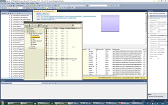


The Intel Classmate PCs are gaining more and more popularity every day, at least according to what figures show. It seems that Quanta has started work on these orders, with expectations for the earliest next-generation Intel Classmate PCs to be shipped to customers in the first quarter of next year, states a news article published on DigiTimes.

The same reports also have it that the touch-screen panels will be manufactured by the world’s largest contract maker of notebooks, Quanta Computer, which has already received orders for the new machine from Intel. If(currentLayout.at(i).dm.dmDisplayOrientation = DMDO_90 ||ĬurrentLayout.at(i).dm.The latest news on Intel's next-generation Classmate PC, a machine designed specifically for the developing markets, says that it will come with a rotating touch-screen panel. TempMon.dm.dmFields = DM_DISPLAYORIENTATION QStringList rotations = rotationsStr.split(",", QString::SkipEmptyParts) The tl dr version could simply be the title of the post, I suppose. I'll put some code below, sorry this is kind of tl dr. The second is that if Intel found a way to program a driver to do it, there must be SOME way to do it. To me, this means two things: the first is that there isn't a way to do this even NON-programmatically through Windows, nor is there a way to do it using Windows API calls.

We COULD, however, find a way to do it, but it was through a separate driver provided by Intel (IEGD). Upon further investigation, there is apparently no way native to Windows XP to rotate a display. Applying that flag caused the function to return the bad flags parameter (DISP_CHANGE_BADFLAGS). Yeah I'll try unsafe display modes, watch out: we're dealing with a bad**s here). The "ChangeDisplaySettingsEX" function in the Windows API provided by Microsoft is returning the return code for a bad display mode (DISP_CHANGE_BADMODE), so I tried applying the flag to allow "unsafe" display modes (because I'm a rebel. We've gotten it to work for the version of our software for Windows 7, and almost everything works with the exception of rotating the displays in Windows XP (which, curiously, DOES work in Windows 7). I'm working on the display portion right now. So, essentially, we're writing a service-level application that can alter attributes of various user-level settings.


 0 kommentar(er)
0 kommentar(er)
